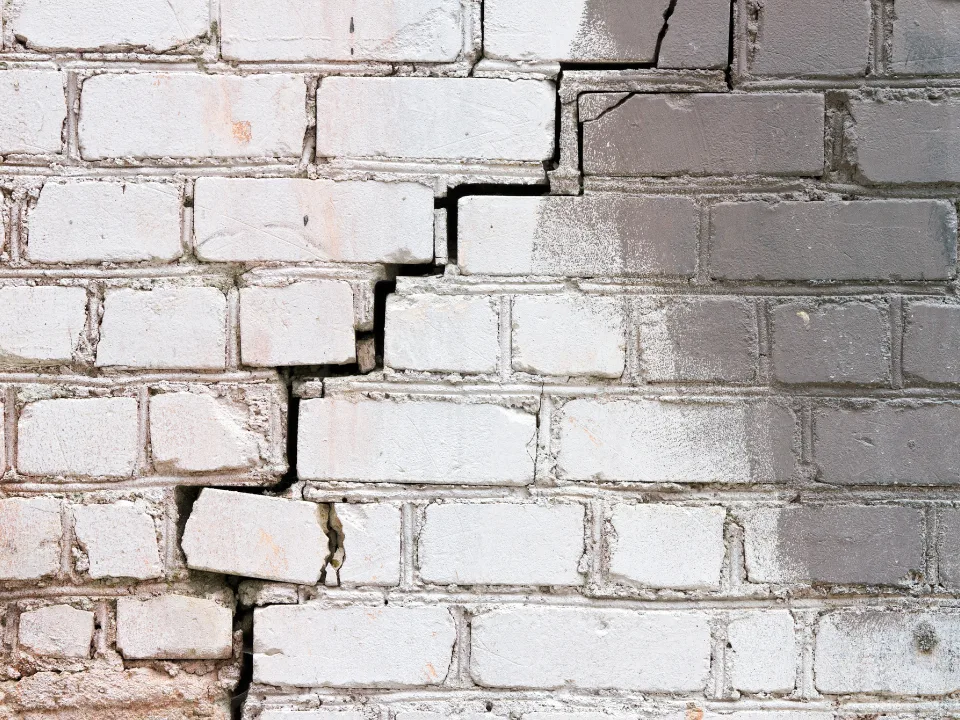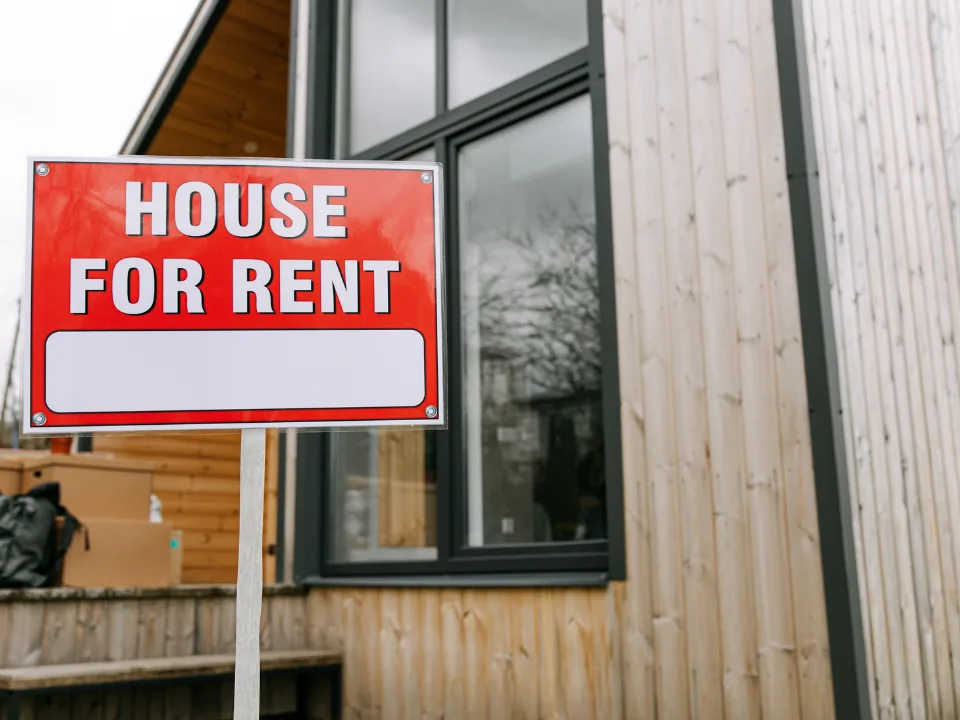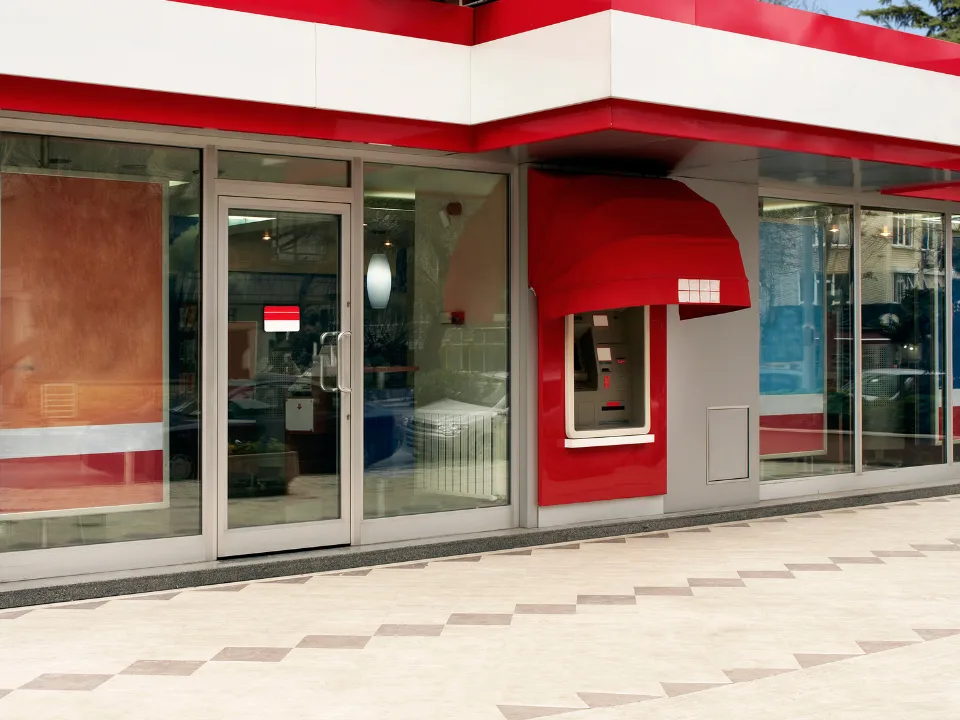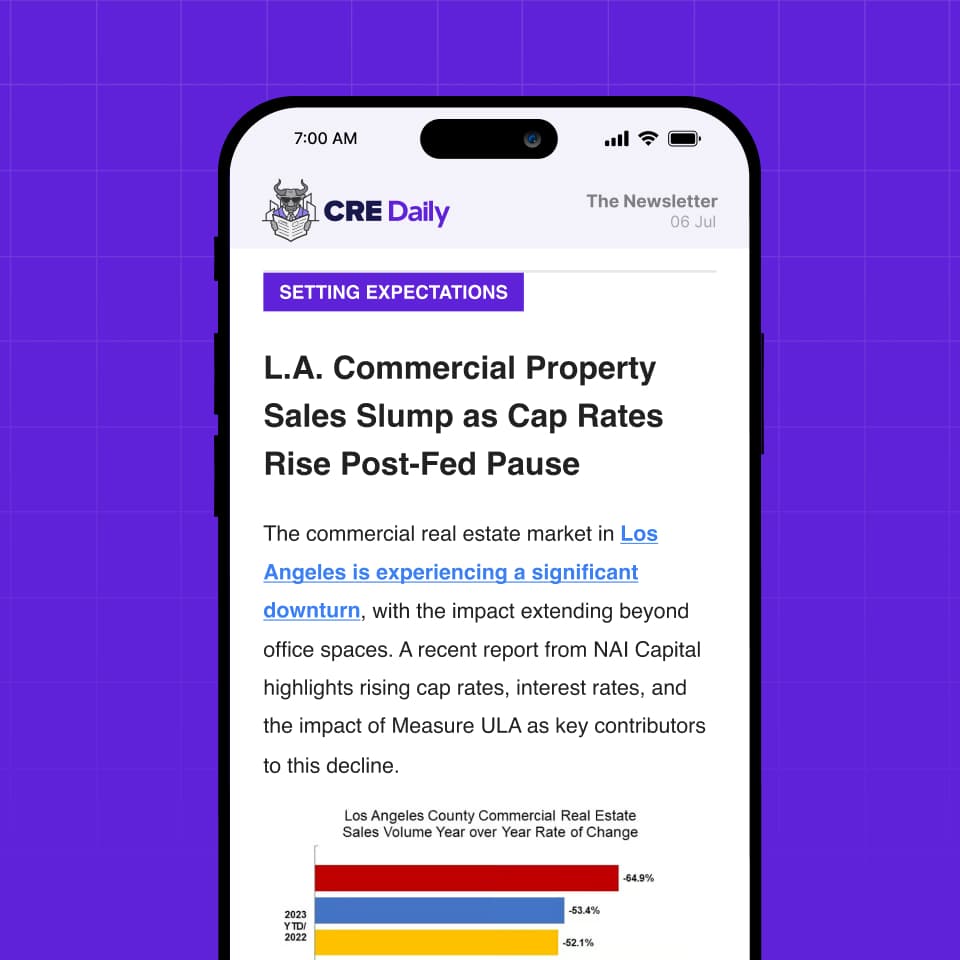- The total amount of distressed commercial real estate assets in the US hit $107B by the end of Q4, a decade-high and a 24.3% YoY increase.
- Office accounts for nearly half of the total distressed assets ($51.6B), but multifamily distress may become a larger issue in 2025, with $108.7B in potential distress looming.
- Distressed property sales, while still a small portion of overall deal volume (2.5%), saw the largest share since 2015, suggesting a potential shift.
CRE distress reached a decade-high of $107B in Q4, according to MSCI’s US distress tracker. Despite signs of slowing distress, however, the sector still faces considerable risks—particularly from office and multifamily, per GlobeSt.
Distress Hits Decade High
The $107B in distressed assets reported for Q4 is the largest quarterly increase in the last 10 years, up 24.3% YoY.
One key observation is the slowing rate of change, or “negative second derivative,” which suggests that while distress is still growing, it’s not happening as quickly as before.
This slowdown could be an early sign of market stabilization, but it remains to be seen if distress will continue to climb or eventually reverse in 2025.
Unending Office Onus
Office properties continue to dominate the distress landscape, with $51.6B in outstanding distress. This represents nearly half of the total distressed CRE value.
Retail follows with $21.4B of distress, while multifamily makes up the third-largest share at $17.1B. Hotels, industrial properties, and other asset types make up the rest of the pie.
Despite its third-place position, multifamily was the primary driver of distress growth in Q4. The growth in multifamily distress is driven by a range of factors, from rising vacancy rates to rent collection challenges in certain markets.
Get Smarter about what matters in CRE
Stay ahead of trends in commercial real estate with CRE Daily – the free newsletter delivering everything you need to start your day in just 5-minutes
The Bigger Threat
While office distress remains a serious concern, the potential distress for multifamily properties is even larger.
MSCI estimates potential distress in the multifamily sector at $108.7B, which represents a staggering 34.9% of the total potential distress across all asset classes. Notably, this is significantly higher than the $74.7B in potential distress in the office sector.
The difference in the types of distress between office and multifamily properties could also complicate recovery efforts.
The rise of hybrid and remote work has completely disrupted office buildings, leading to higher vacancy rates and reduced demand. Meanwhile, multifamily properties face different challenges, with fewer vacant apartments available for tenants to move into if landlords encounter financial difficulties.
Distressed Property Sales
Distressed property sales still make up a small portion of the overall market. In 2024, distressed sales accounted for just 2.5% of the total annual CRE deal volume.
While this is a small percentage, it’s the largest share seen since 2015, indicating that distressed assets could become a bigger part of the market soon.
However, this figure still pales in comparison to the 18% of total deal volume that distressed sales represented in 2010, during the aftermath of the GFC. So, while CRE distress is still growing, the pace of panicked sales remains subdued compared to past crises.
What’s Next?
Looking ahead, 2025 will likely be a pivotal year for CRE distress. The combination of rising office vacancies, potential multifamily struggles, and a slowing economy could continue to push distress levels higher.
However, as the rate of distress growth slows, new opportunities could present themselves. Investors and property owners alike must keep a close eye on signals of when to buy, when to sell, or when to hold in an increasingly volatile market.

















